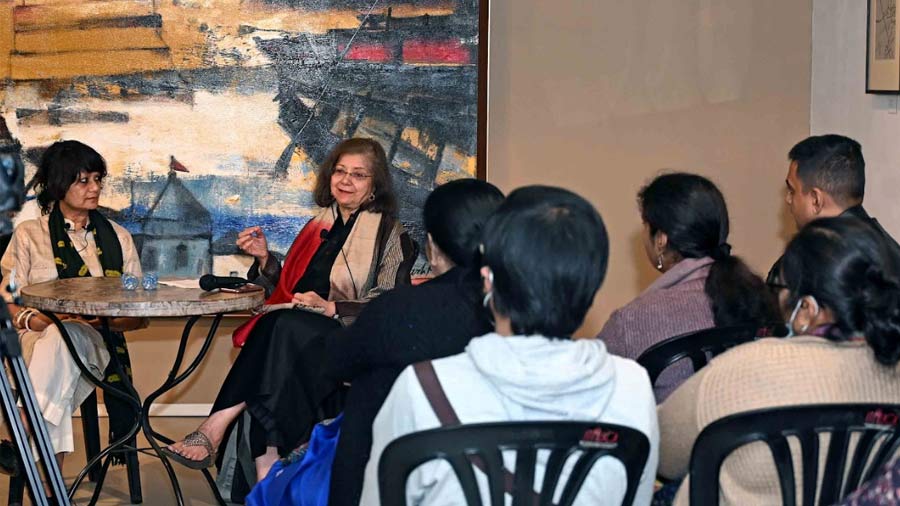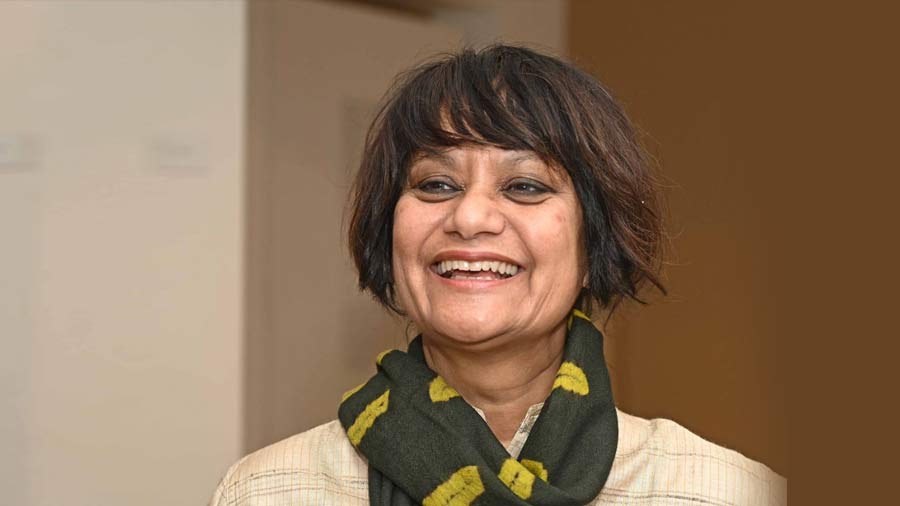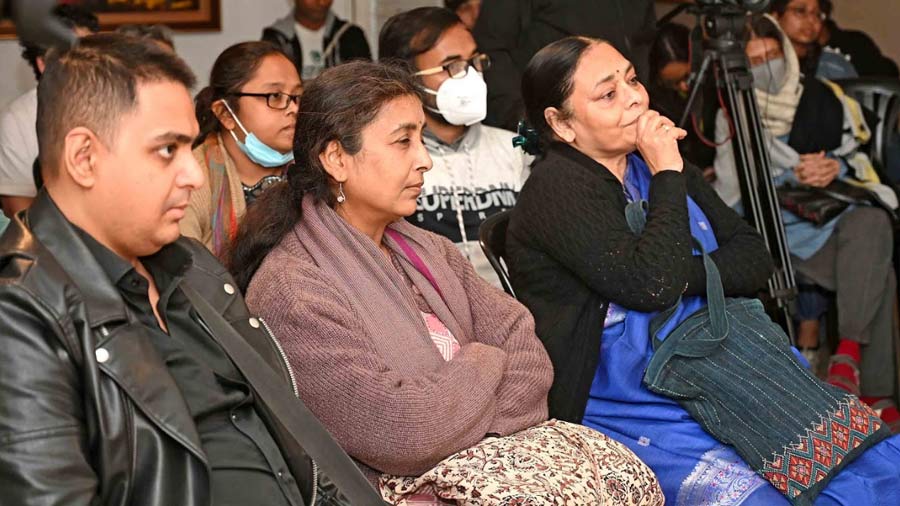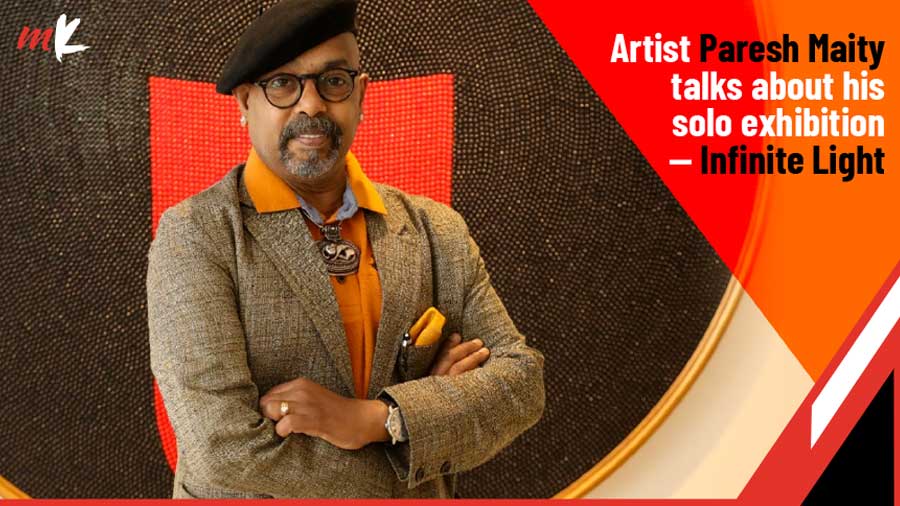Migration, diaspora, race and use of media such as textiles, objects and more from all over the world were the focus of a conversation between artist and sculptor Rina Banerjee and Rakhi Sarkar, director and curator of CIMA Gallery, on January 2.
Born in Kolkata, Banerjee migrated to Manchester and London before finally settling down in Queens, New York. Not surprisingly, her work draws from inter-cultural philosophies. Indian, Chinese and Aztecs are among the prime inspirations for her artworks.
The conversation at CIMA Gallery meandered through topics such as Banerjee’s ideas about art, promotion and branding of artists, teaching art and more. In the audience were art lovers, artists, art students and enthusiasts from the city.
“It’s very important for CIMA to have conversations of this nature. We rarely get opportunities for our artists to travel and meet other artists from other parts of the world. So, we always avail such opportunities. Whenever somebody comes to Kolkata, we try and invite our young artists so that they have a chance to converse. We need these conversations and connections, without which art or culture cannot happen. That is one of our aims and objectives and we always try and bring about these interactions,” Sarkar said.
My Kolkata brings to you highlights from the conversation

It’s dangerous to see yourself as a conqueror. Realise that the work that we make is about connecting with people, said Banerjee
On public recognition
Today, personal branding and investing in promotion have become almost mandatory in every field. Asked about conducting oneself in the public domain, Banerjee said: “It’s dangerous to see yourself as a conqueror. Realise that the work that we make is about connecting with people. You must connect to the right people — who will support you. There are class obstructions that don’t allow access to socialisation. We all have to make ourselves known to the world. One of the ways is to choose our job. All of this is part of human culture. Believe in yourself, institutions are all about who you are.”
Role of educational institutions
The artist has also been teaching at the Yale School of Art graduate programme since 2020. Commenting on the role of educational institutions, she said, “Institutions are not doing anything. People are questioning institutions to create systems that represent generations. There is a lack of visibility of people of various generations. It’s unhealthy to have people of the same sex, age, etc. as the room for broad conversation is limited. Also, the domination of male artists is being done away with. Today, there is more individual work. The recipes or formulas of creating the future are being examined.”

A teacher at Yale, the artist highlighted the need for visibility of people of various generations to encourage broader conversations
Why her works have almost literary titles
The conversation took an interesting turn when Banerjee was asked about how she named her works. With names almost bordering on the literary, like Solitude, in Cognito ...., The Beast of Dispossession, Series: Beneath the Earth, under the surface value and more, what was her thought process behind the names. “When I started painting, I was concerned about giving up the voice behind the work. Now, we are more communicative. There is media, back-and-forth emails. The possibility of recovering the lost voice of the artist is more. The only way I could have talked about my work [back in the day] was through the title. The title is something we had the freedom to create and share. I don’t see myself as a writer or a poet. My titles are large and bulky with a lot of layers. They talk about the content of the work. You have to write about your work to communicate with your audience.”

When asked by the audience about ambition, Banerjee said she has realised that 'ambition was just to live your life completely, fully'
Artist-curator relationship
Throwing light on the artist-curator relationship in contemporary times, Banerjee, who has had her works displayed worldwide in Pennsylvania, San Jose, California, Kiran Nadar Museum of Art and other places, said: “Young curators today in their 30s and 40s are very excited. They want to express what they think. Collaborations taking place between the curator and artists are more important than in the past. Earlier, the level of censorship was also higher. That is not today. There is enough room.”
About ambition
When Banerjee was asked by an audience-member about her thoughts about ambition, she replied unhindered, “Ambition was a scary word in my 20s, to create something so large was impossible. In my 30s and 40s, I worked hard for my ambition. Later on, I realised ambition was just to live your life completely, fully. My ambition is not to be the best, it is about what it meant to live your life and have faith in humanity.’’
Audience speaks

Madhuja Mukherjee, filmmaker and professor, film studies, Jadavpur University said that for her it is important 'to understand the philosophy of depth of thoughts' of any artist
Madhuja Mukherjee, filmmaker and professor, film studies, Jadavpur University, attended the event. “I think what is particularly interesting for me is that you know the artist’s work, you have read about her or you have seen images; the other is to actually hear the artist speak about the thought process. That is something I think is extremely important at these conversations. It is something to be able to learn for artists to be able to just articulate your thoughts in words, which is very rare in India. That was very interesting for me to understand the philosophy of depth of thoughts.”

